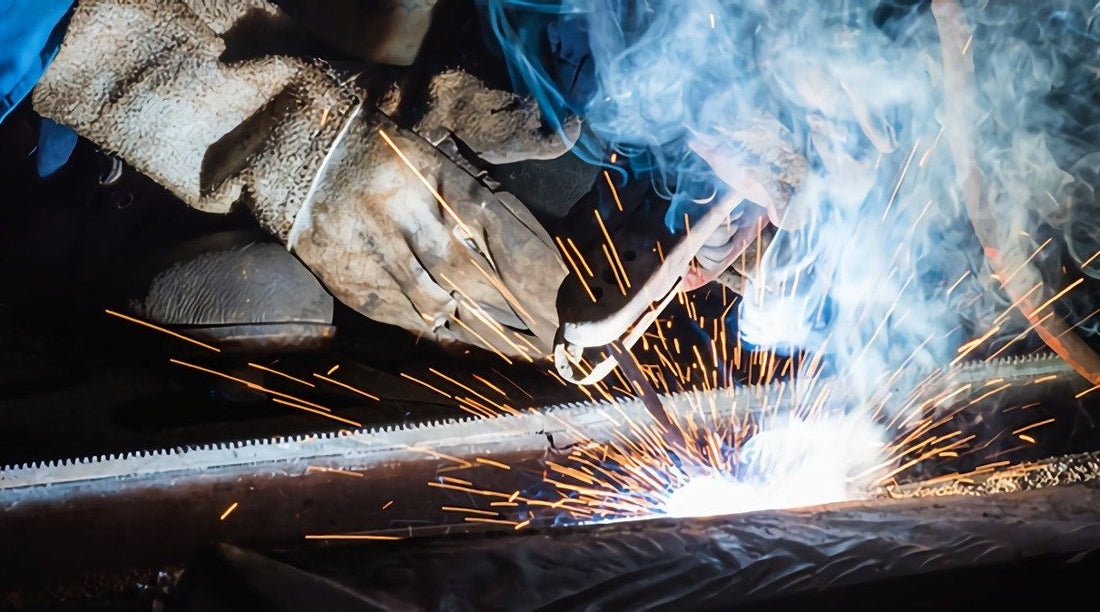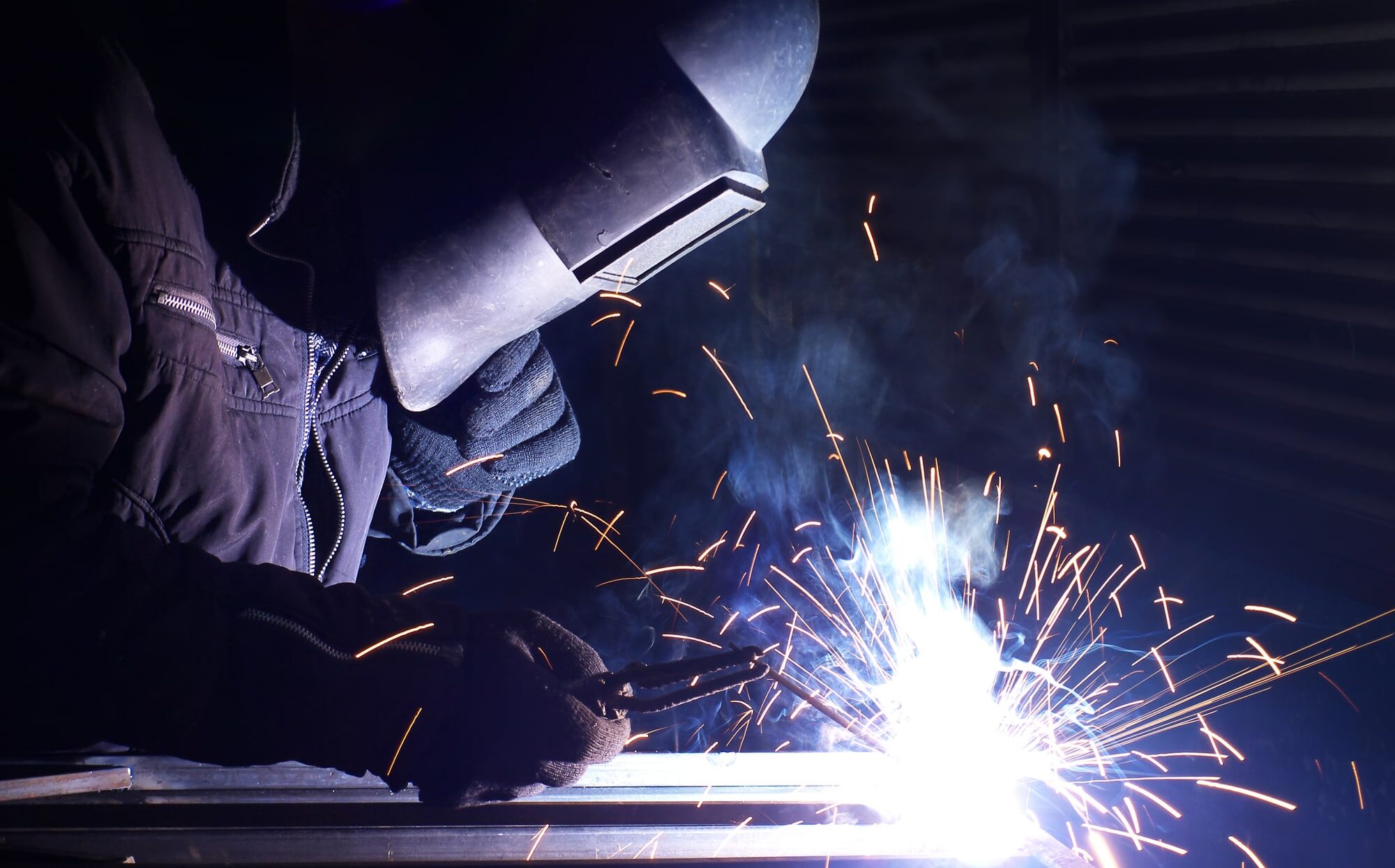Usual Welding Repair Service Issues and How to Address Them Efficiently
Welding fixings often come across a variety of problems that can endanger the honesty of the end product. Usual troubles consist of poor infiltration, porosity, and imbalance, to name a few. Each defect presents one-of-a-kind obstacles that call for particular strategies for resolution. Comprehending these concerns is necessary for welders aiming to boost their abilities and results. This discussion will discover these typical welding repair service issues and effective approaches to address them.
Inadequate Penetration
Inadequate infiltration takes place when the weld steel fails to completely fuse with the base material, leading to weak joints and possible structural failings. This issue often originates from inadequate warm input, incorrect electrode angle, or inappropriate welding rate. Welders may run into poor penetration as a result of a miscalculation of the required parameters for a certain material density or type. Additionally, contamination on the base product's surface can prevent effective bonding, aggravating the problem. To deal with insufficient infiltration, welders should ensure appropriate setups on their equipment and maintain a clean work surface area. Regular assessment of welds is advised to recognize any deficiencies early, permitting prompt adjustments and the prevention of jeopardized structural integrity in bonded settings up.
Porosity
Porosity is a common issue in bonded joints that shows up as small gas bubbles trapped within the weld metal. This defect can endanger the honesty of the weld, leading to reduced stamina and prospective failure under anxiety. Belgrade. Porosity generally occurs from contamination, moisture, or inappropriate welding methods, which enable gases to escape into the molten weld pool. To resolve porosity, welders must guarantee correct surface prep work, maintain a tidy functioning setting, and utilize appropriate welding parameters. In addition, selecting the best filler product and protecting gas can reduce gas entrapment. Routine assessment and testing of welds can help identify porosity early, guaranteeing prompt restorative actions are taken, thus maintaining the quality and reliability of the bonded structure
Misalignment
Misalignment in welding can develop from various factors, including inappropriate arrangement and thermal expansion. Recognizing the origin triggers is necessary for effective resolution. Several modification strategies are available to realign components and assure architectural honesty.
Reasons for Misalignment
Welding misalignment frequently comes from a variety of underlying concerns that can compromise architectural honesty. One key cause is inappropriate fit-up of elements prior to welding, which can bring about gaps and irregular surfaces. Variants in thermal development during the welding process can also result in distortion, especially if the products being joined have different coefficients of development. Additionally, insufficient fixturing and securing may stop working to hold components firmly in place, resulting in activity throughout welding. Poorly maintained equipment, consisting of welding machines and devices, might present variances in the weld grain, more adding to imbalance. Operator error, stemming from not enough training or experience, can additionally play a significant role in creating misaligned welds.

Correction Techniques Readily Available
Attending to misalignment efficiently needs a combination of corrective methods tailored to the particular issues available. One usual technique is the use of jigs or fixtures to hold parts in the appropriate placement during welding, making sure constant alignment. Furthermore, preheating the materials can help in reducing distortion and improve fit-up. For substantial imbalance, mechanical realignment methods, such as making use of hydraulic jacks or clamps, can be used to deal with the placement prior to welding. Post-weld heat treatment might additionally be necessary to soothe tensions triggered by misalignment. Careful assessment and adjustment throughout the configuration stage can protect against misalignment problems from coming to be significant troubles, promoting a smoother welding procedure and enhancing overall architectural integrity.
Distortion
Distortion is a common obstacle in welding that can emerge from numerous variables, consisting of uneven cooling and heating. Comprehending the reasons of distortion is important for applying effective prevention techniques. Resolving this concern not only enhances structural honesty but likewise boosts the overall quality of the weld.
Reasons for Distortion
When subjected to the intense warm of welding, products frequently go through changes that can bring about distortion. This phenomenon mostly develops from thermal development and contraction during the welding process. As the weld location warms up, the product broadens; upon air conditioning, it contracts, which can develop internal stress and anxieties. Additionally, uneven heating across a workpiece can worsen these stresses, leading to bending or flexing. The type of product also plays a significant duty; steels with varying thermal conductivity and coefficients of development may respond in different ways, resulting in uncertain distortions. Furthermore, inadequate joint style and insufficient fixturing can add to misalignment during welding, increasing the chance of distortion. Understanding these causes is crucial for reliable welding repair and prevention approaches.
Prevention Techniques
Effective avoidance strategies for distortion throughout welding concentrate on regulating warm input and ensuring proper joint style. Maintaining a constant heat input assists to lessen thermal expansion Belgrade Fabrication and contraction, which can bring about distortion. Making use of strategies such as pre-heating the work surface can additionally minimize the temperature level slope, promoting uniform home heating. Additionally, picking appropriate joint designs, such as T-joints or lap joints, can boost stability and reduce stress and anxiety concentrations. Executing correct fixturing to protect the workpieces in location even more aids in maintaining placement during the welding process. Ultimately, staggered welding series can disperse warmth a lot more equally, stopping local distortion. By using these strategies, welders can considerably lower the possibility of distortion and enhance the total high quality of their welds.
Cracking
Cracking is an usual issue encountered in welding repairs, typically resulting from numerous factors such as inappropriate air conditioning rates, material option, or poor joint prep work. The occurrence of cracks can significantly jeopardize the stability of the weld, causing possible failures during operation. To resolve this issue, welders should initially examine the root causes, ensuring that materials work and properly selected for the details application. Additionally, managing the air conditioning price throughout the welding procedure is vital; rapid cooling can induce anxiety and bring about breaking. Correct joint style and preparation likewise contribute to minimizing the threat. Applying these strategies can boost weld quality and sturdiness, inevitably lowering the possibility of splitting in completed weldments.

Insufficient Fusion
A considerable issue in welding repair work is incomplete fusion, which happens when the weld metal does not properly bond with the base product or previous weld passes - Welding. This issue can lead to weak points in the joint, potentially jeopardizing the integrity of the welded structure. Elements adding to insufficient blend consist of insufficient warmth input, improper welding technique, and contamination of the surface areas being signed up with. To address this problem successfully, welders should guarantee proper pre-weld cleaning and surface preparation, in addition to change their welding parameters to achieve sufficient penetration and blend. Regular evaluation during the welding process can also aid determine incomplete combination early, enabling timely restorative steps to improve the total quality of the weld
Overheating
While welding repair services can boost structural integrity, overheating offers a significant obstacle that can cause material destruction. Extreme warm during welding can modify the mechanical buildings of metals, resulting in reduced stamina, boosted brittleness, and warping. This sensation is specifically critical in high-stress applications where architectural dependability is critical. Recognizing getting too hot can include aesthetic evaluations for staining or distortion, along with keeping track of temperature level during the welding procedure. To alleviate the threats linked with overheating, welders ought to utilize appropriate techniques, such as controlling warmth input, adjusting traveling rate, and using appropriate filler products. Furthermore, executing pre- and post-weld heat therapies can help bring back material homes and improve the total top quality of the repair work, making sure long-lasting efficiency and safety.
Often Asked Inquiries
What Are the Common Indicators of a Welding Defect?

Just How Can I Evaluate My Welds for High quality?
To test welds for high quality, one can make use of aesthetic examinations, ultrasonic testing, and radiographic methods. Each technique guarantees architectural honesty, determines issues, and verifies adherence to defined requirements, inevitably improving the integrity of the bonded joints.
What Safety Preventative Measures Should I Take While Welding?
When welding, one must prioritize safety by putting on suitable individual protective devices, making certain proper air flow, safeguarding flammable products away, preserving a tidy workspace, and recognizing environments to stop mishaps and injuries.
Can I Fix a Weld Without Redoing the Entire Joint?
Fixing a weld without redoing the whole joint is feasible, depending upon the damages (Belgrade). Techniques such as grinding, adding filler product, or using a welding procedure can successfully deal with details flaws while protecting the bordering framework
What Devices Are Important for Effective Welding Repair Works?
Vital devices for reliable welding fixings consist of a welding machine, wire brush, grinder, safety gear, clamps, and filler products. Each device plays a vital function in ensuring quality and safety during the repair process. Porosity normally develops from contamination, moisture, or improper welding techniques, which permit gases to escape into the liquified weld pool. Improperly kept devices, consisting of welding machines and devices, may present disparities in the weld bead, additional adding to imbalance. When subjected to the extreme warmth of welding, materials typically undergo changes that can lead to distortion. Splitting is an usual problem encountered in welding repair services, usually resulting from different factors such as inappropriate air conditioning prices, product choice, or insufficient joint preparation. A substantial issue in welding fixings is incomplete fusion, which occurs when the weld steel does not effectively bond with the base material or previous weld passes.
Comments on “Steps for perfect fusion with Montana Mobile Welding and Repair Belgrade Fabrication”